If you’re anything like me, you love that feeling of sitting down with your planner and notebook at the start of a new week. A cup of tea nearby. A fresh page waiting. Over the years I’ve developed a mindful weekly planning rhythm that helps me stay organized and connected to my days. It’s my way of blending structure with reflection, creativity, and intention.
This is how I move between my Dated Planner (this year it’s a Classic Happy Planner with the Dashboard layout) and my Daily BlendBook (currently an A5 lined notebook). Together, they make up the heart of my planning flow – what I call Journablend. My flow follows three simple steps: Braindump → List → Engage, with Nourish and Daily coming in later through my evening and wellness routines.
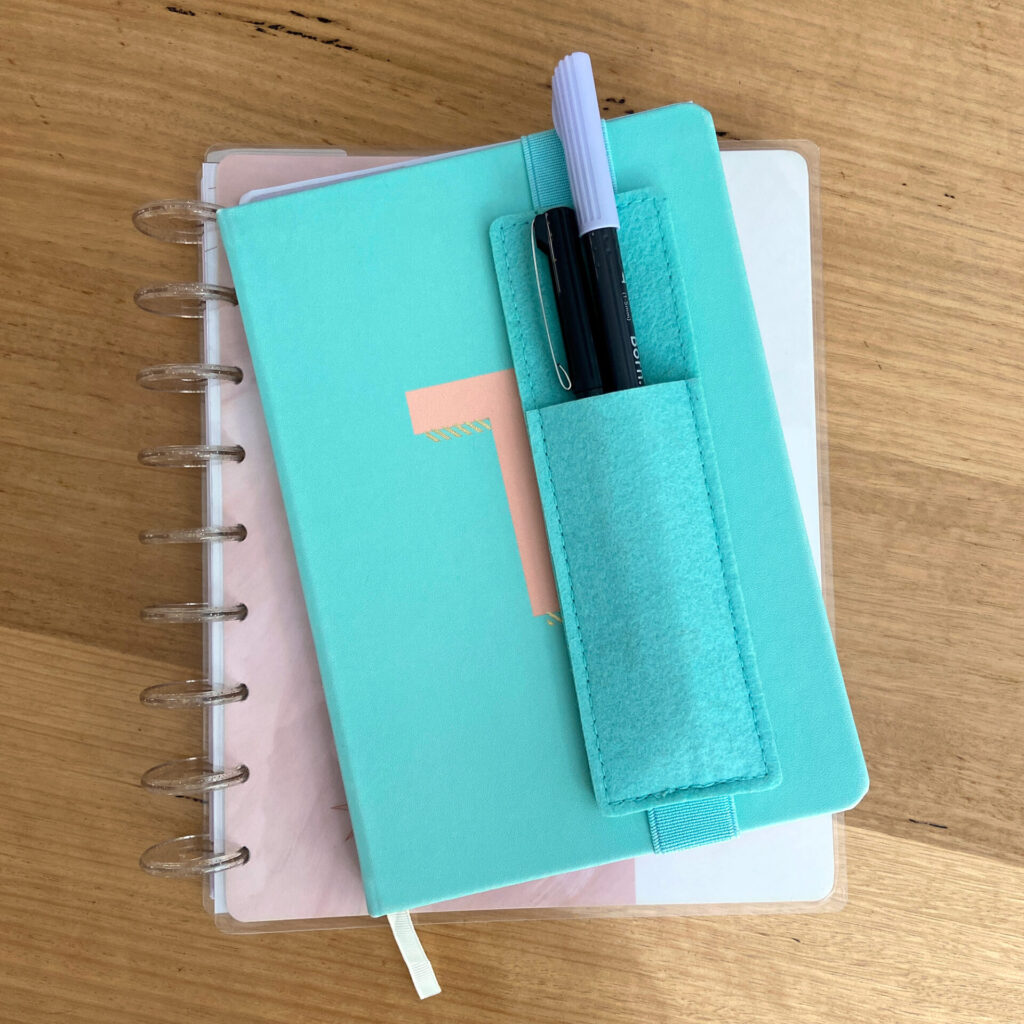
My Weekly Planning Ritual
Usually on a Sunday afternoon (or sometimes Monday morning), I set aside a little time to reset and plan for the week ahead. I gather three things:
- My Dated Planner – this is where I manage monthly and weekly overviews.
- My Daily BlendBook – where I write notes, to-do’s, ideas, reflections, and daily entries.
- A large notepad or printable Braindump page – for getting everything out of my head and onto paper. (You can find my printable Braindump page here.)
This quiet planning time helps me see the bigger picture and ease into the week with clarity.
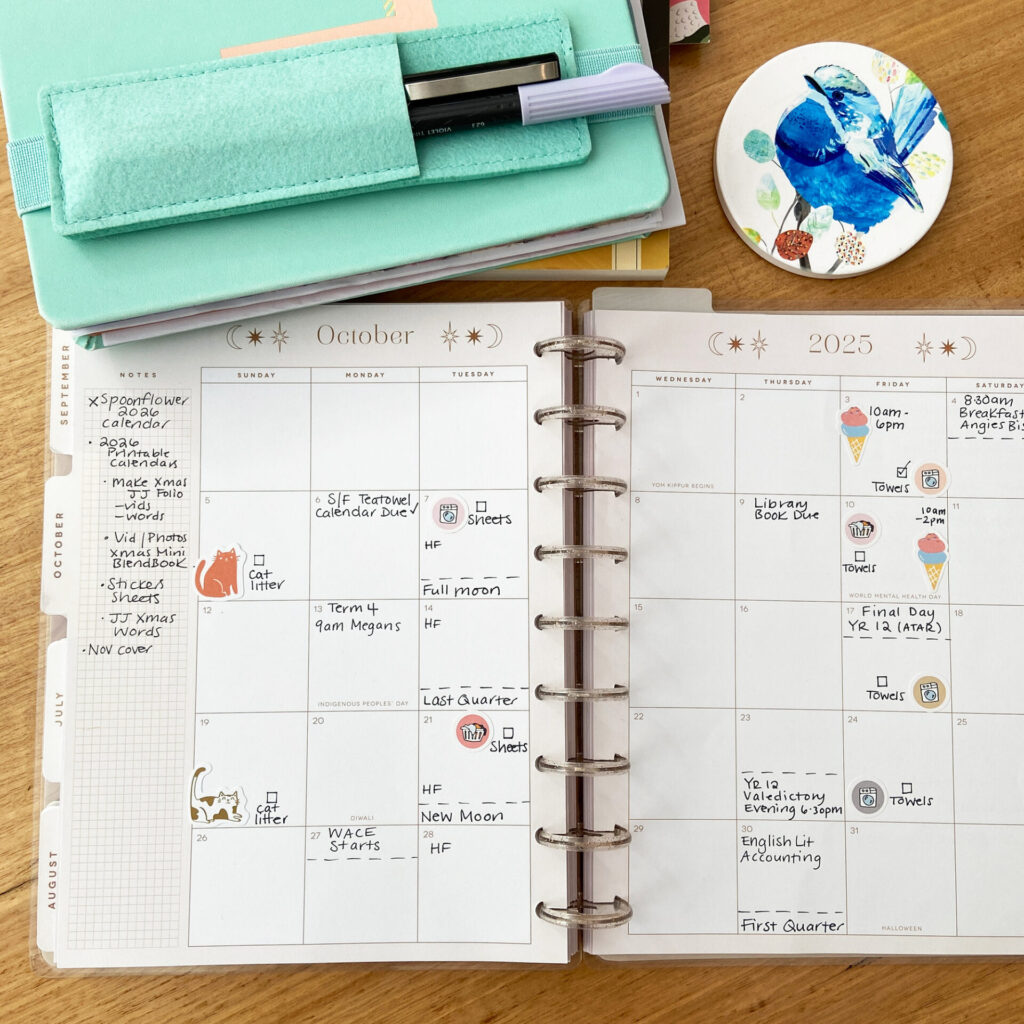
Step 1: Check in with the Month
I start with the current month’s spread in my Dated Planner. On this spread, I keep:
- A master to-do list for the month.
- A calendar with important dates, deadlines, appointments, events, holidays, reminders, and recurring tasks.
I review the calendar and monthly list, and then transfer anything that needs my attention in the coming week to my weekly spread (also inside my Dated Planner).
Each weekly spread has:
- A master to-do list for the week.
- A small box for each day, where I jot down events, appointments, or reminders
These master lists aren’t strict checklists, they’re flexible collections of things I’d like to get done during the month or week, depending on my time, priorities, and energy. Some items roll forward, some evolve, and that’s perfectly okay.
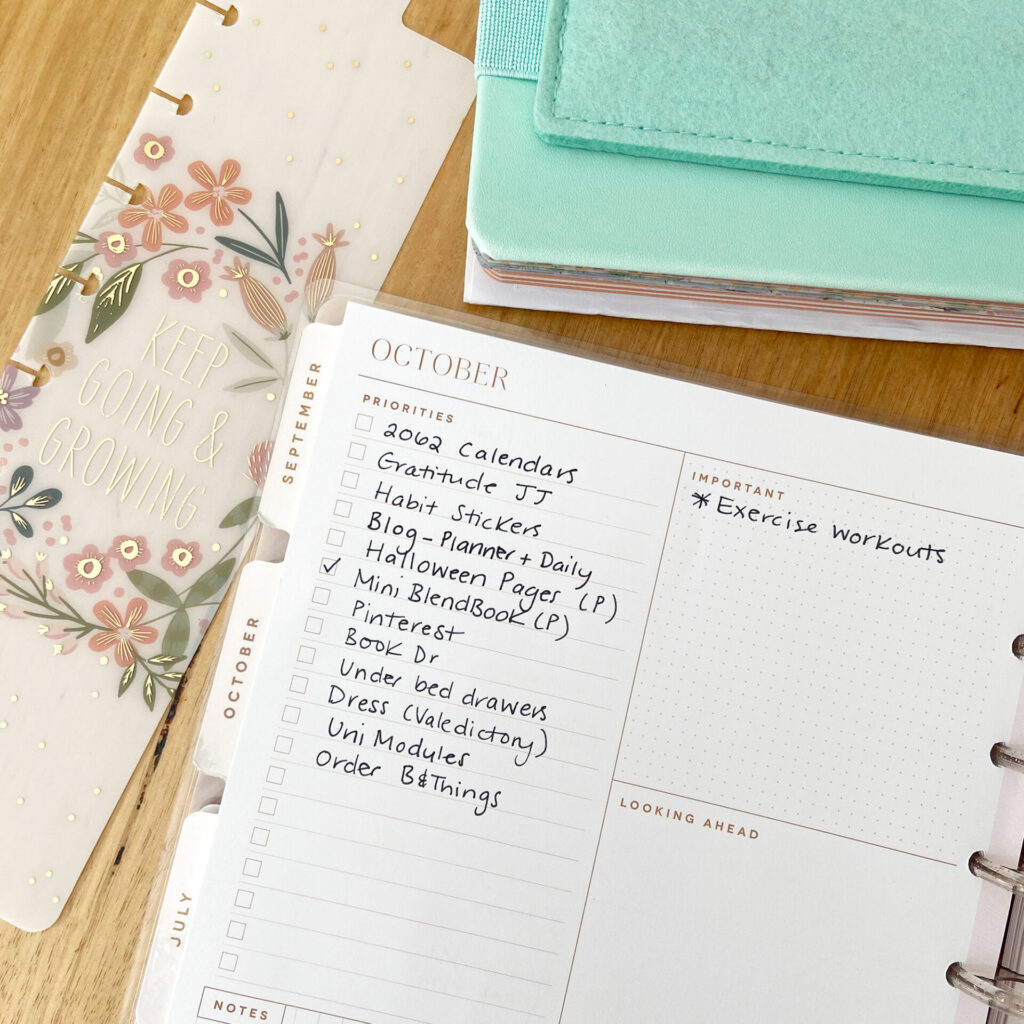
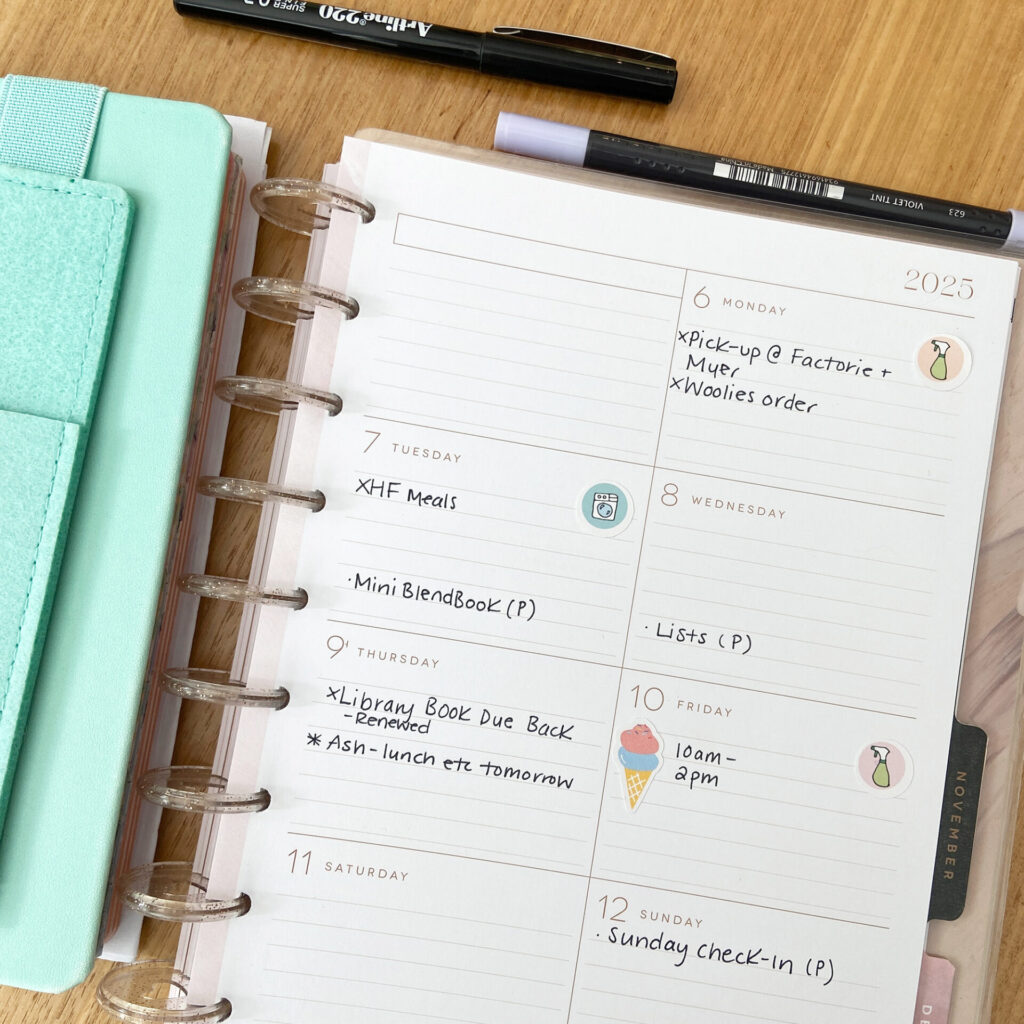
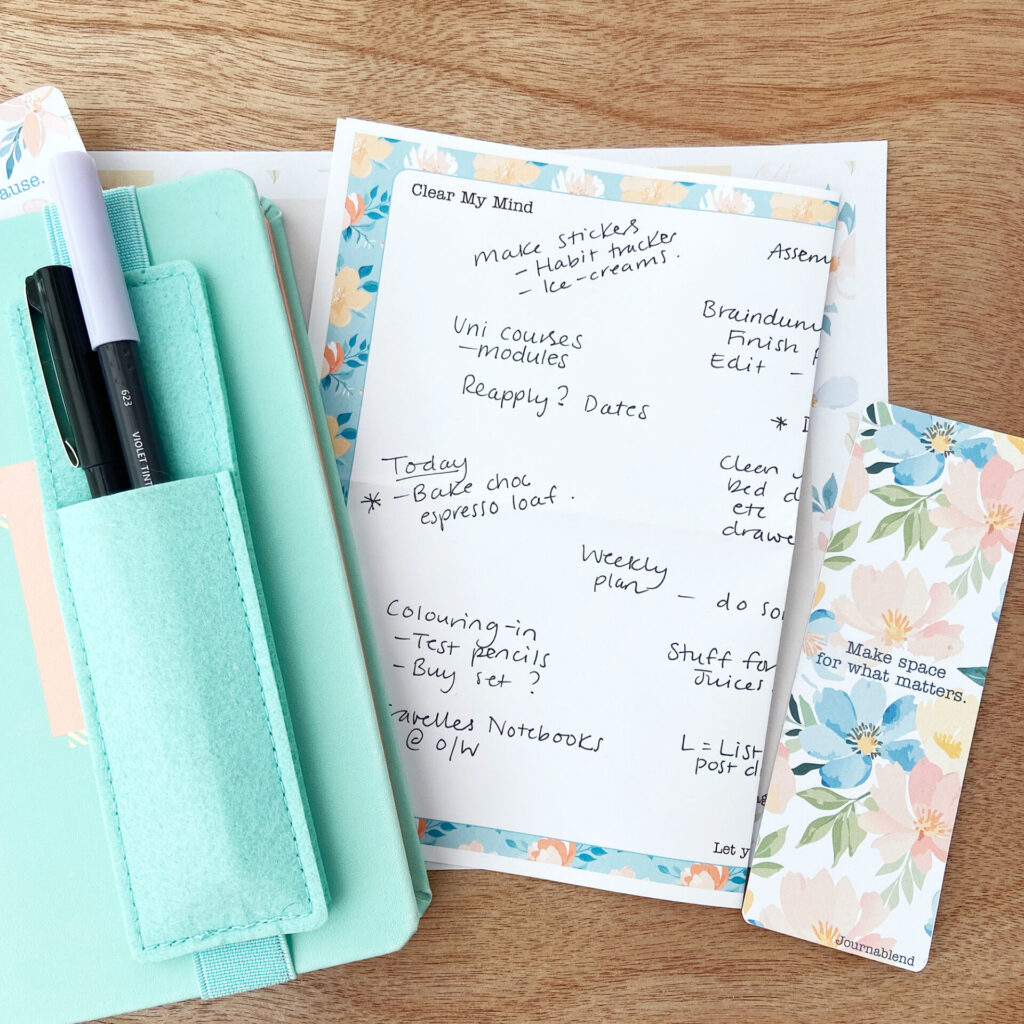
Step 2: Braindump and list
Once my weekly spread is roughly filled out, I do a quick Braindump – the first stage of the Blend Flow.
I jot down anything extra that’s floating around in my mind: tasks, reminders, creative ideas, or thoughts about upcoming projects and personal goals. This step helps me capture anything I might otherwise forget and see what really needs attention. Then I circle related items or link them with little arrows or lines, bringing order to the chaos and spotting connections.
From there, I add anything important to my weekly master list in the Dated Planner, or directly to a day of the week if it has a clear deadline.
Step 3: Review and Engage
Once my Dated Planner is set up for the week, I move over to my Daily BlendBook.
I look through my entries from the past week, checking for unfinished tasks, notes I don’t want to lose, or ideas that need action. If I find any, I migrate them into my Dated Planner’s new weekly list or daily boxes.
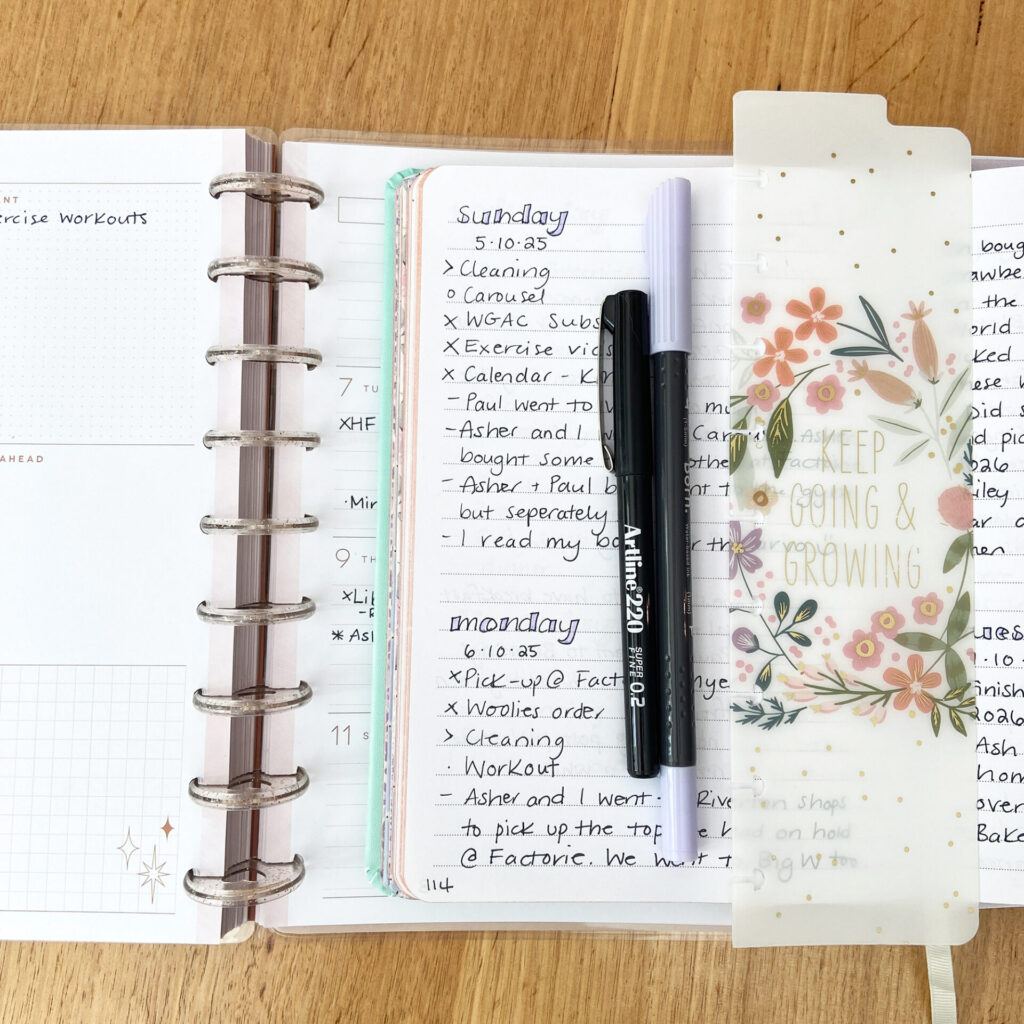
As I go, I tidy up the pages in my Daily BlendBook: ticking off what’s done, crossing out what’s no longer relevant – a bit like the migration process in the Bullet Journal Method.
Then I’m ready to start fresh for the day ahead. I write the day and date, and note any to-do’s for that particular day, guided by the weekly and monthly master lists.
I might even add a strip of washi tape or a little collage with a quote if I’m in the mood and have the time. Just something simple to make the page feel inspiring and personal.
Throughout the day, my Daily BlendBook is where I Engage – the third stage of the Blend Flow. It’s my companion for tracking, reflecting, jotting down thoughts, or recording little moments.
In the evening (or sometimes the next morning), I check in with my Dated Planner again to see what’s coming up next, keeping the two books flowing together.
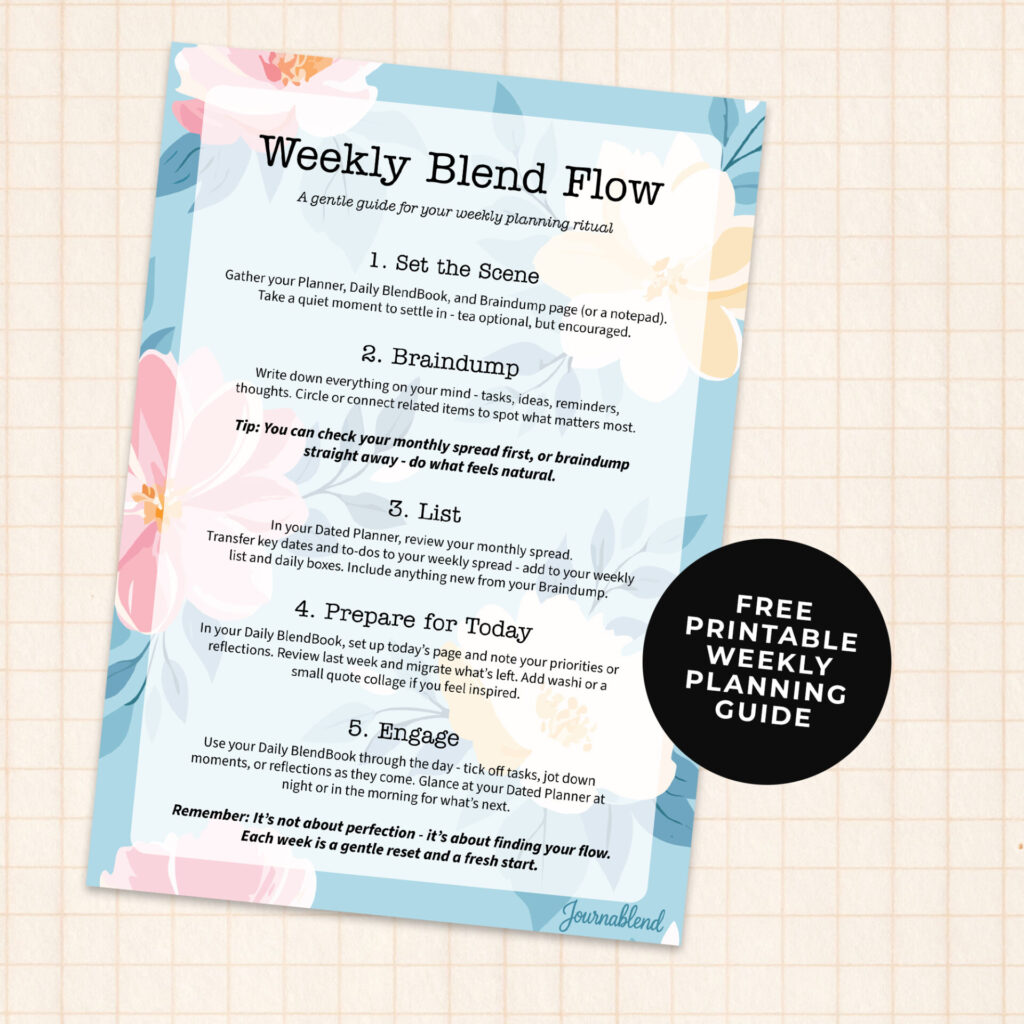
weekly planning – Blending Your Own Way
This process has evolved naturally for me. It’s part structure, part reflection, part creativity, and that’s what I love most about it. Journablend isn’t a rigid system; it’s a way of bringing together the tools and methods that work best for you.
Whether you use a planner and a notebook like I do, or combine digital and paper tools, the idea is the same:
- Braindump what’s in your mind.
- List what matters most.
- Engage with your days in a way that feels mindful and personal.
When I follow this flow, I feel more grounded and clear – not because everything gets done, but because I’m connected to what matters.
If you’d like to keep a simple reminder of this process handy, you can download the Weekly Blend Flow printable guide in the Planner Lovers Resource Library or on Patreon.
Patreon is also where I share a closer look at my journaling processes, journaling tips and prompts, and quiet creative moments – a cozy space to stay inspired through the week. Join my free Patreon community here.
Over to You 💛
Do you use more than one notebook or planner? I’d love to know how you blend them together – whether you keep them separate, switch between them, or let them overlap like I do. Leave a comment below!
Happy journaling!
P.S. You can read all my Journablend posts here.

Leave a Reply